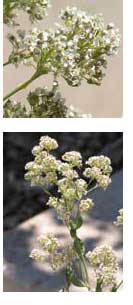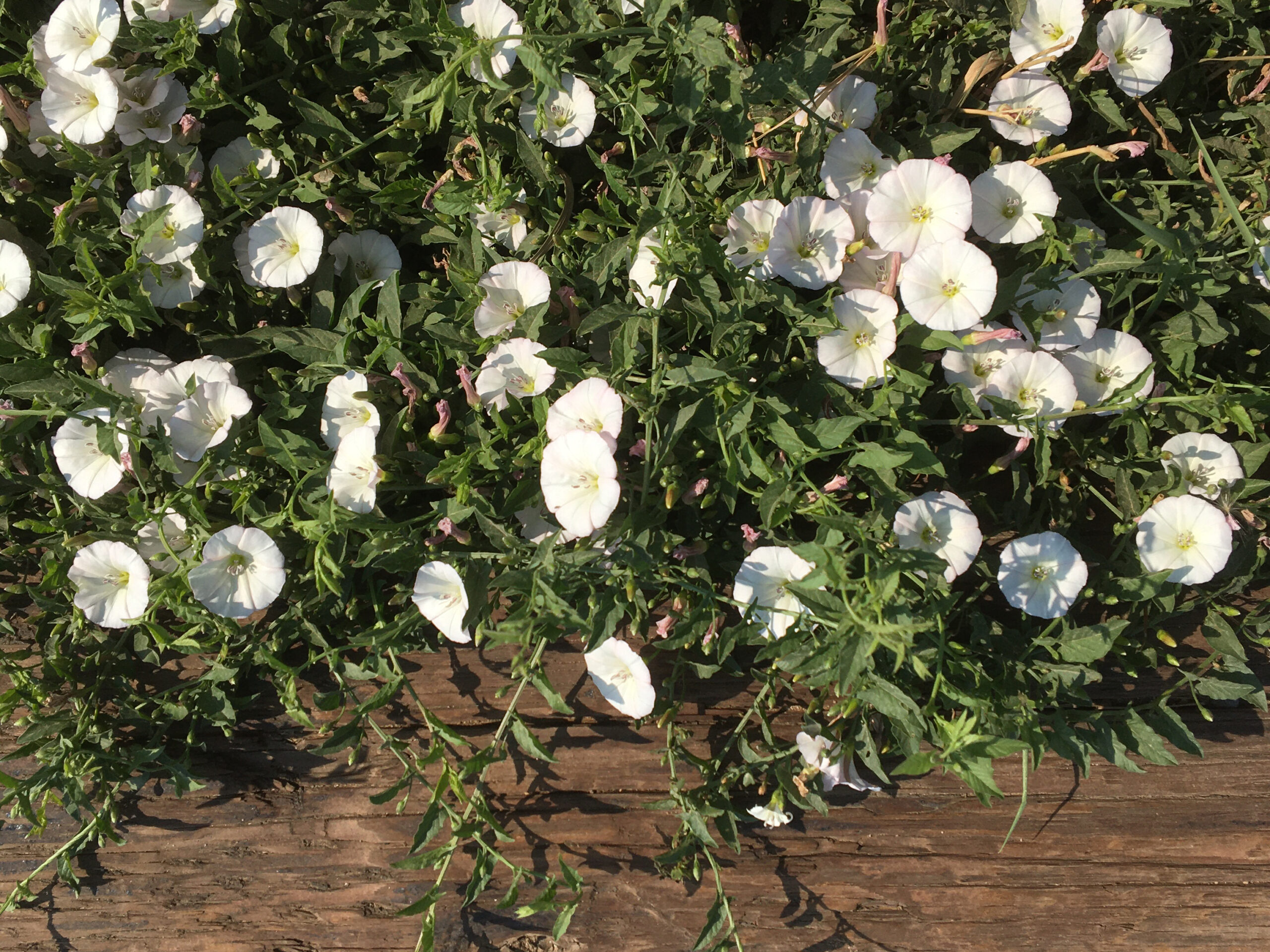Perennial pepperweed
Lepidium latifolium
Keys to Identification
- Perennial pepperweed has dense clusters of white flowers that appear in early summer
- The leaves and stem are covered with a waxy layer
This information courtesy of the Colorado Natural Areas Program
Family
Mustard (Brassicaceae)
Other Names
Tall whitetop, broad-leaved peppergrass, Virginia pepperweed.
USDA Code
LELA2
Legal Status
Colorado Noxious Weed List B
Identification
Lifecycle
Perennial
Growth form
Forb
Flower
White flowers are packed in dense clusters near the ends of branches. May-Aug.
Seeds/Fruit
Fruits are nearly round, about 0.1 in wide and usually sparsely hairy.
Leaves
Leaves are alternate, lance-shaped, entire to toothed, bright-green to gray-green, and don’t have clasping bases. The basal leaves are larger than the upper leaves.
Stems
Mature plants are 1-3 ft tall.
Roots
Perennial pepperweed can form deep-seated rootstocks.
Seedling
The leaves and stem are covered with a waxy layer (Whitson et al 1996).
Similar Species
Exotics
Hoary cress(Cardaria draba), leaves have clasping bases, perennial pepperweed can also be distinguished by its waxy appearance.
Natives
None known.
Impacts
Agricultural
Perennial pepperweed invades irrigated pastures, cropland, and native meadows (FEIS 1998).
Ecological
Perennial pepperweed is an aggressive colonizer of riparian habitats. It establishes rapidly and can eliminate competing vegetation (FEIS 1998).
Habitat and Distribution
General requirements
Perennial pepperweed is most often found in open, unshaded areas on disturbed, and often saline soils.
Distribution
Perennial pepperweed is locally common in riparian areas, marshy floodplains, valley bottoms, and seasonally wet areas from 5,500 to 9,000 ft. Perennial pepperweed is found in similar environments throughout much of the western U.S.
Historical
Introduced from Eurasia.
Biology/Ecology
Life cycle
Dense flower clusters appear in early summer and continue through August.
Mode of reproduction
Mainly by spreading rhizomes, and can be an aggressive colonizer of disturbed areas (FEIS 1998).
Seed production
Perennial pepperweed produces an abundance of highly germinable seeds. Seed production is from June to August.
Seed bank
Seeds have no apparent dormancy.
Dispersal
Seeds drop from the plant or travel short distances by wind/water.
References
FEIS – Fire Effects Information System [Online] (1996, September). Prescribed Fire and Fire Effects Research Work Unit, Rocky Mountain Research Station (producer), US Forest Service. Available: www.fs.fed.us/database/feis/ [1998,March 12]
Whitson, T.D.(ed.), L.C. Burrill, S.A. Dewey, D.W. Cudney, B.E. Nelson, R.D. Lee, R. Parker. 1996. Perennial pepperweed. Weeds of the West. Western Society of Weed Science, in cooperation with the Western United States Land Grant Universities Cooperative Extension Services, Newark CA. pg. 230.



